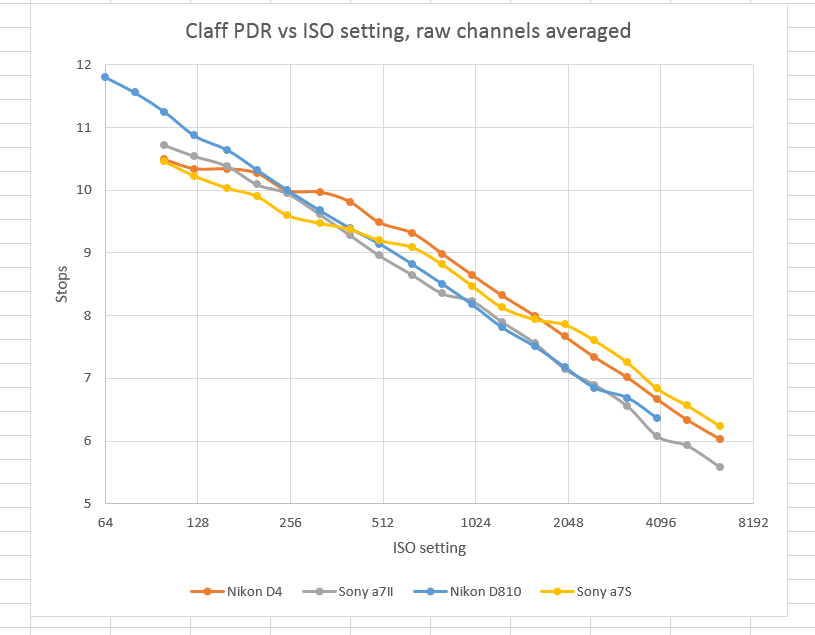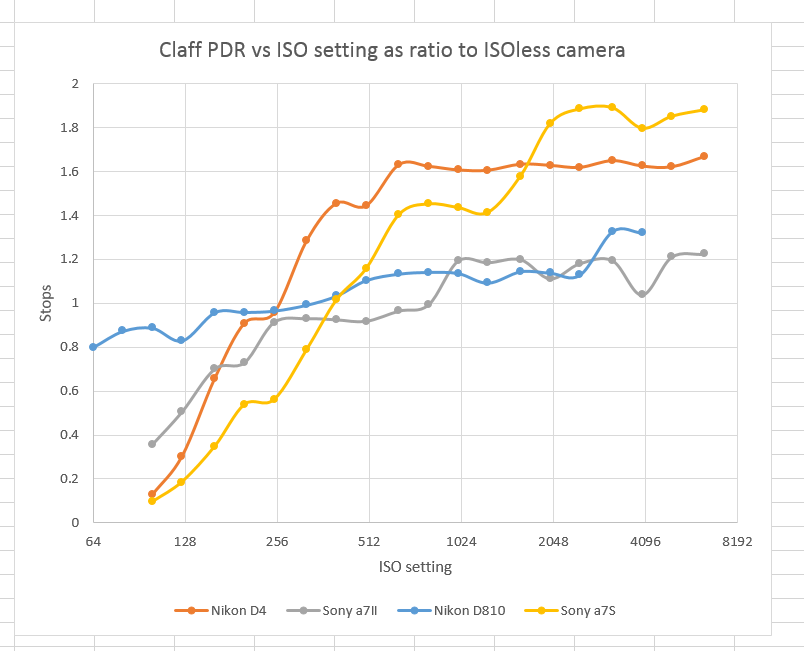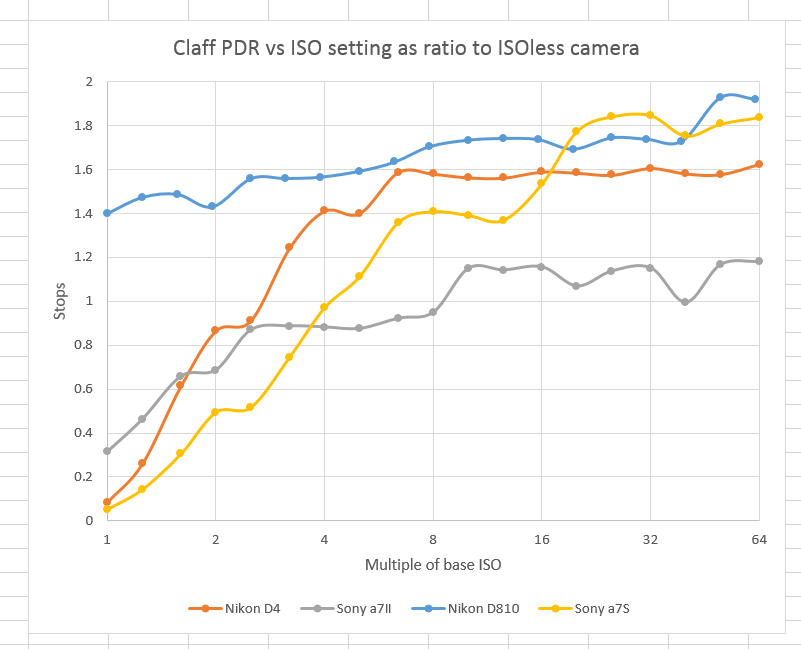In the previous post, I modified BIll Claff’s photographic dynamic range criterion slightly, and used it to compare several cameras. Today, I’d like to add one more camera, the Sony alpha 7S, and compare the photographic dynamic range of all four vs ISO.
The Claff SNRs (see here for explanation) of the four cameras are:
- the a7II Claff SNR is 4.
- the D4 Claff SNR is 4.9.
- the D810 Claff SNR is 3.3.
- the a7S Claff SNR is 5.7.
When the four cameras Claff PDRs are plotted versus ISO setting on the same chart, we get this:
If you’re looking at low-light performance, you could make the argument that comparing cameras at the same ISO setting is legitimate. However, there is no standardization of the way the ISO settings for a camera are decided, and different manufacturers use different algorithms.
The high road here is to calibrate each camera’s ISO settings to raw file values under ISO-traceable illumination. I’m working on that.
If a camera were totally ISOless, its read noise measured at the ADC would be proportional to the ISO setting. Another way to look at it is that its read noise referred to the sensor would be constant. If the PDR of such a camera were limited by read noise, with no material photon noise component, the PDR would drop by a stop for every stop the ISO knob is turned up.
If we express the above curves as a ratio to that perfectly ISOless camera, we get this:
and this:
Bill Claff calls the above curves “Photographic Dynamic Range Shadow Improvement” curves. If you compare them to the curves in the previous post, I think you’ll see that they are inverses of each other.
The curves above were generated by a direct search of the data sets. There was no modeling involved. That’s why the lines are wavy. The other way to do this work is to model the cameras at each ISO, then use a camera simulator to get the data for the curves. I’ve modeled all four of the cameras, and I have a simulator all coded up. I think I’ll make plots of the simulator output in the near future.



Leave a Reply